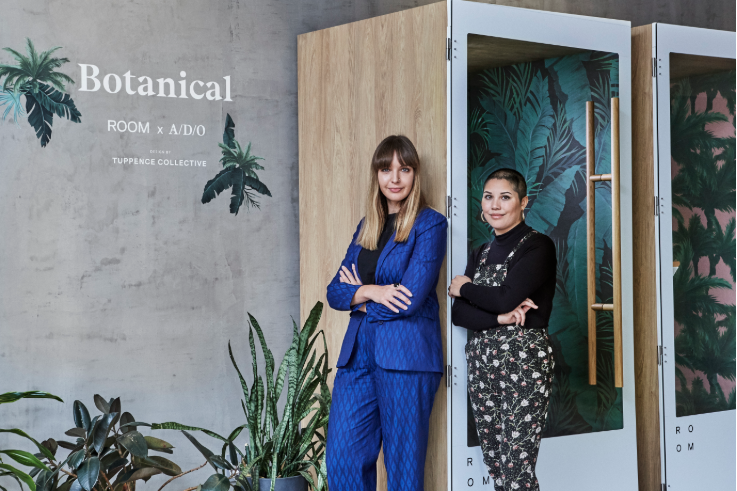Botanical Booths | Alicia Perry and Rebecca Intavarant for ROOM
Design duo Alicia Perry and Rebecca Intavarant - founders of Tuppence Collective - collaborated with New York-based startup ROOM to create custom designs for their limited edition Room One booths - a reimagined working space for the modern world.
Described as ‘the future of work’ and based on the a phone booth design - the booths fuse creativity and functionality to provide a private, soundproof space to work in or take calls. Through the effective use of space, they are designed to create a quiet place to breathe and think out loud within the working environment.
Tuppence Collective, the north London-based surface design studio, design and hand-paint original patterns inspired by beautiful botanicals and modern designs.
Alicia and Rebecca work together in the studio, splitting each project 50/50. They sketch their designs then paint them in acryllic together so each piece has a blend of both artists’ styles. The designs are cut out and layered onto different coloured backgrounds.
These striking patterns inspired by the natural world were the perfect fit for ROOM who wanted to create a stimulating environment within the booths whilst giving a sense of tranquility in the workplace. The duo had lots of ideas to meet the brief.
“Whenever we create a design, we’re always conscious that we want our work to appeal to both men and women. Our focus has always been on botanicals, as we wanted to show that floral doesn’t have to mean feminine. We try not to be influenced by current trends, since our aim is to create designs that are timeless.
“For inspiration, we tend to look back to the arts and crafts movement but also incorporate brighter colors and tropical foliage for a more modern feel. This way, we combine the essence of old and new, much like what ROOM is doing by giving the classic phone booth a modern twist. All of our designs are hand-painted for a more traditional yet illustrative feel.
“Our pattern design for the booths is meant to truly transport employees to a place of relaxation. The booths allow creativity to flourish by providing privacy and inspiration to the modern worker.”
The final designs were printed onto fabric and applied to the walls of the booths to create the limited edition, three-piece Botanical collection.
The launch event for the collection was held at A/D/O - a Brooklyn-based creative hub built for designers and open for all. The booths will be available for public use throughout January to provide guests with the private spaces they need for phone calls and focused work.
ROOM custom designed the Botanical colleciton with the A/D/O community in mind, to make room for creative exchange and effective collaboration, and the bright, open-plan space was the perfect place to first showcase the booths.
All photos courtesy of ROOM.
A/D/O were delighted with the end result and the developed functionality of their space. They said: “As a public space that fosters a creative community, we are thrilled that we can now offer a private space for guests to take important calls. ROOM has brought the future of work to A/D/O.































